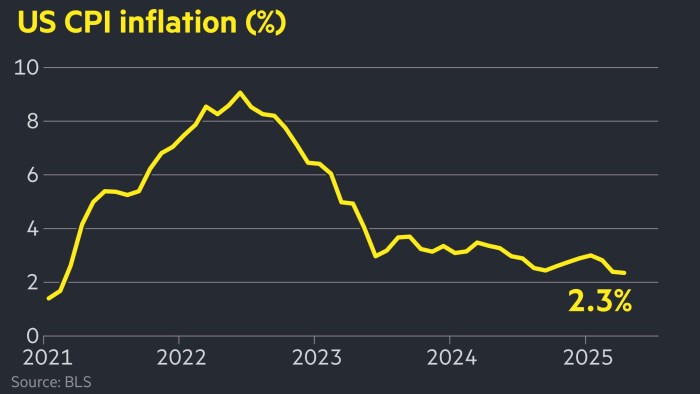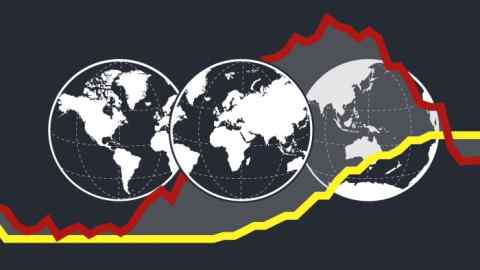Unlock the White House Watch newsletter for free
Your guide to what Trump’s second term means for Washington, business and the world
US inflation fell to 2.3 per cent in April, the month Donald Trump imposed his global tariffs, as the US president maintains pressure on the Federal Reserve to cut interest rates.
Tuesday’s annual consumer price index figure from the Bureau of Labor Statistics was below the expectations of analysts surveyed by Bloomberg that inflation would remain at March’s 2.4 per cent rate.
Although Trump has cut back many of the tariffs he announced on April 2 — including this week with China — economists caution that most of the impact of the import duties has yet to be felt, with Fed officials anticipating further increases in price pressures.
April’s figure was brought lower by a drop in price for services such as airfares, hotels and sporting events. Groceries fell 0.4 per cent, led by a 12.7 per cent drop in egg prices as they reversed some of their bird flu-driven surge.
“Everyone is watching for the tariff impacts,” said Andrew Hollenhorst, economist at Citigroup. “And we didn’t see that in today’s report.”
The core inflation rate, which excludes changes in the price of food and energy products, remained at 2.8 per cent in April, the BLS said.
The Yale Budget Lab, a university research organisation, said on Monday that, because of the tariffs, the average US consumer would pay $2,800 more for products this year than in 2024.
“We do expect to see some tariff impact on the May and June CPI reports, so the Fed has a fairly long runway to observe the incoming data,” said Durham Abric at Citadel Securities.
The US central bank, which has kept rates in the 4.25 per cent to 4.5 per cent range for six months, next meets in June.
Trump has heaped pressure on Jay Powell to cut borrowing costs, adding last week that dealing with the Fed chair was like “talking to a wall”.
Recommended
US stocks opened little changed, with the S&P 500 up 0.1 per cent. The dollar index, which measures the US currency against a basket of six rivals, was 0.3 per cent lower.
The two-year Treasury yield, which follows interest rate expectations, was slightly lower, down 0.04 percentage points to 3.97 per cent. Bond yields fall as prices rise.
Traders expect the Fed to lower interest rates twice this year, with a small chance of a third quarter-point cut, roughly as they had before the inflation data.
The Fed’s preferred inflation target is not CPI but the Personal Consumption Expenditures, which fell to 2.3 per cent in March but remained above the central bank’s 2 per cent goal.




